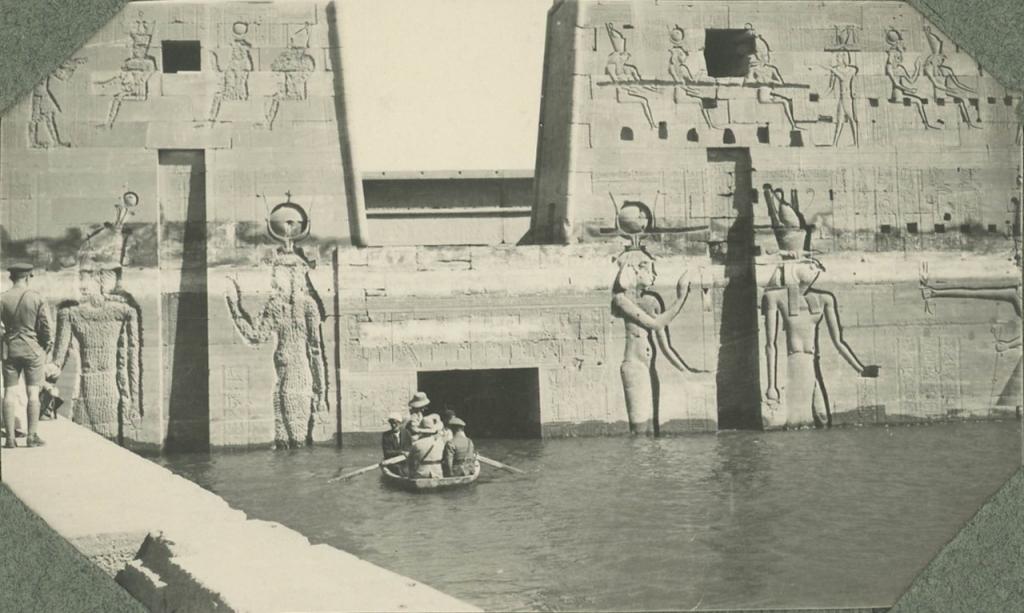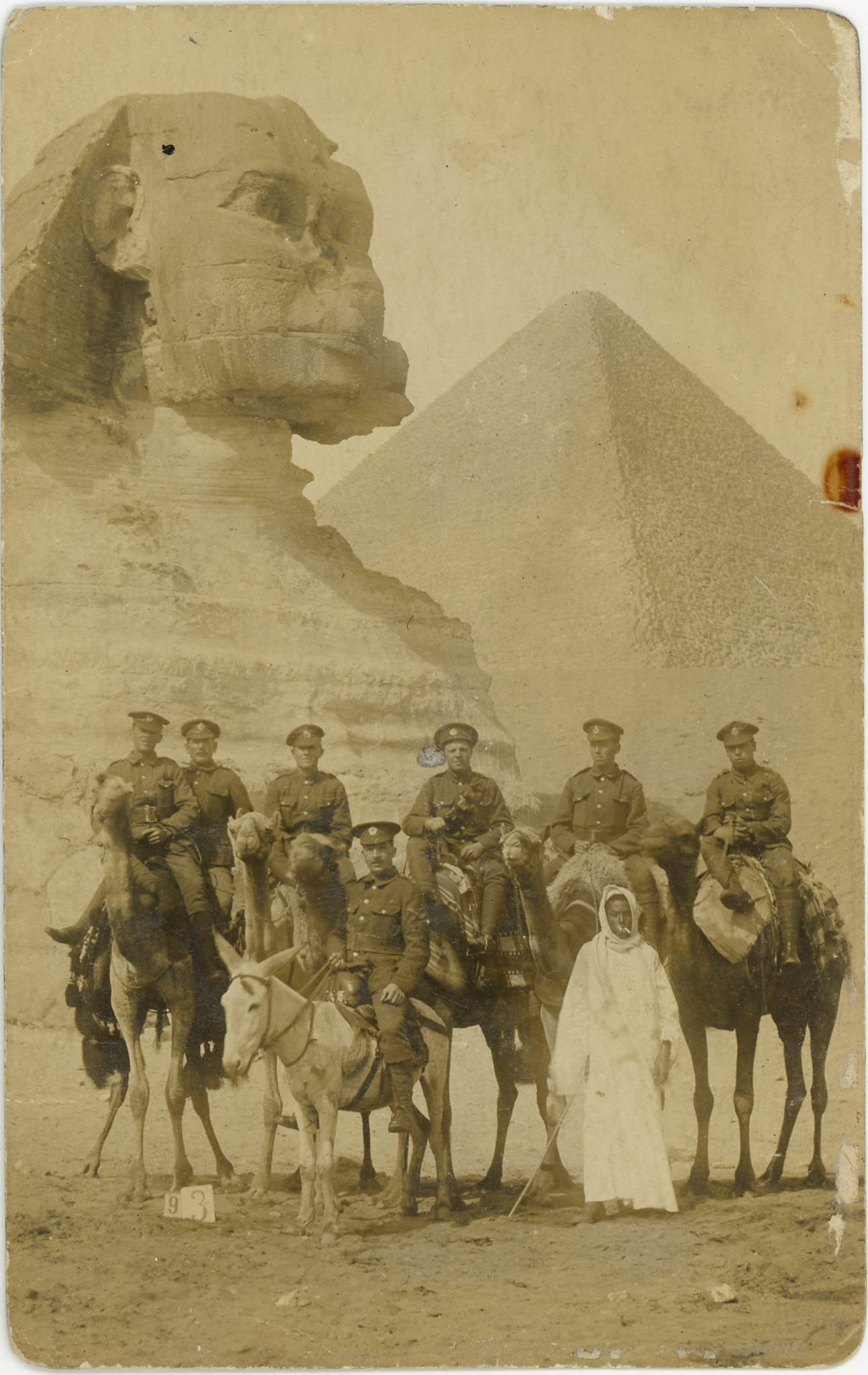Views of an Antique Land?

This little exhibition of photographs of Egypt taken during the First World War takes its title from Percy Shelley’s sonnet Ozymandias: “I met a traveller from an Antique Land…”.
During the First World War men and women, from all over the British Empire, were based in Egypt, especially around Cairo where there were camps at the Pyramids as well as others in suburbs such as Heliopolis and in cities such as Alexandria. From the military camps soldiers ventured out on leave, or for military duties, taking their cameras with them, or bought postcards of the places they visited.
This exhibition looks at some of their photographs and postcards as witness to the conflict and the wonders of the ancient East, but what do the views of this antique land mean to you? For example, do you think the photographs of the ancient sites visited by the service personnel in World War One have anything to tell us? Did you expect that the soldiers would have had enough leisure time to enable them to visit the sites? What do you think they might have known about the sites before they found themselves becoming ‘enforced tourists’ in Egypt?

What about the sites themselves? If you have been to Egypt or seen recent television programmes about it, can you see differences in the way the ancient sites look now to the way they did during the First World War? Do you think that they are presented differently for visitors today?
Did you know that soldiers, sailors, airmen and nurses from all over the world took part in the First World War in Egypt? How do you think the different nationalities fighting on the same side got on with one another? Can the photographs they took give us any indication? Do the views give some impression of the lives of Egyptian at this time?
We are very keen to know what you think about these photographs. So much of our thinking about the First World War is coloured by the Western Front in France and Belgium that Egypt is usually overlooked. Do you think these pictures go some way toward correcting that bias? Are they interesting for historians, archaeologists and the public at large or are they just family pictures?
You can tell us your thoughts at: www.facebook.com/ww1imagesegypt and @ww1imagesegypt on Twitter
